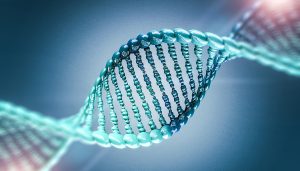 Genomics, the branch of molecular biology concerned with the structure, function, evolution, and mapping of an individual’s genes, is already revolutionizing the way medicine treats cancer. Like many sciences, genomics has “niches;” single-cell genomics is a rapidly developing field, and current technologies can assay a single cell’s gene expression, DNA variation, epigenetic state, and nuclear structure within its environment. Cellular identity is critical by itself; the human body is composed of trillions of cells that belong to approximately 200 different cell types and even those types are, from cell to cell, filled with unique expression profiles. When cancer is involved, a disease that deals in very specific chain of events, it becomes even more so.
Genomics, the branch of molecular biology concerned with the structure, function, evolution, and mapping of an individual’s genes, is already revolutionizing the way medicine treats cancer. Like many sciences, genomics has “niches;” single-cell genomics is a rapidly developing field, and current technologies can assay a single cell’s gene expression, DNA variation, epigenetic state, and nuclear structure within its environment. Cellular identity is critical by itself; the human body is composed of trillions of cells that belong to approximately 200 different cell types and even those types are, from cell to cell, filled with unique expression profiles. When cancer is involved, a disease that deals in very specific chain of events, it becomes even more so.
Heralded as “Breakthrough of the Year” by Science Magazine in 2018, single-cell sequencing, which, as the name implies, involves isolating a single cell for analysis, gives insight into what had been insurmountable obstacles. Heterogeneous samples, rare cell types, cell lineage relationships (including back-engineering cells all the way back to the zygote stage of pregnancy), analyses of microbes that cannot be cultured, and disease evolution can now be explored. With cancer, the process can be used to explore why some tumor cells react to chemotherapy, others do not and live on to spread.
Traditional sequencing techniques such as the Sanger or Illumina processes usually use a mix of cells numbering in the millions. The results are a genomic “big picture” where the finer points are skipped (this is not a negative; both techniques have saved thousands of lives and opened up venues to cancer cures unthinkable 20 years ago). The first single-cell RNA-sequencing study was published in 2009; the technique is now positioned to reveal cancer therapy resistance mechanisms that are lost at the bulk level. Tumors diverge wildly from cell to cell, and that diversity is impacted by selection pressures that can impact the underlying genetics of a cancer cell population. Selection pressures represent a wide spectrum of factors, including the effects of the immune system, hypoxia (lack of oxygen), nutrient deprivation, geographical barriers, pH changes, and chemotherapy.
NFCR is fully involved in this technology by funding the work of Dr. Haiyong Han and Dr. Daniel Von Hoff of the Arizona-based Translational Genomics Research Institute. The two are using single-cell sequencing on pancreatic cancer biopsy tissue from patients and tumor models. By performing single cell sequencing, Han and Von Hoff hope to find new targets in the stroma (the supporting structure around a tumor), EMT cells (cells that gain migratory and invasive properties) and treat patients in a pilot clinical trial for precision medicine. With the advent of drastically cheaper and higher throughput sequencing technologies, it is expected that single cell sequencing will become a standard tool in oncology and microbiology.
References:
ACloserLookAtStemCells.org. (2019). Single Cell Sequencing: Unwinding Embryonic Development One Cell at a Time. Retrieved from: https://www.closerlookatstemcells.org/2019/01/04/single-cell-sequencing-unwinding-embryonic-development-one-cell-at-a-time/
Haque, Ashraful. (2017). A practical guide to single-cell RNA-sequencing for biomedical research and clinical applications. Retrieved from: https://genomemedicine.biomedcentral.com/articles/10.1186/s13073-017-0467-4
Yilmaz, Suzan et al. (2012). SINGLE CELL GENOME SEQUENCING. Retrieved from: https://www.ncbi.nlm.nih.gov/pmc/articles/PMC3318999/
